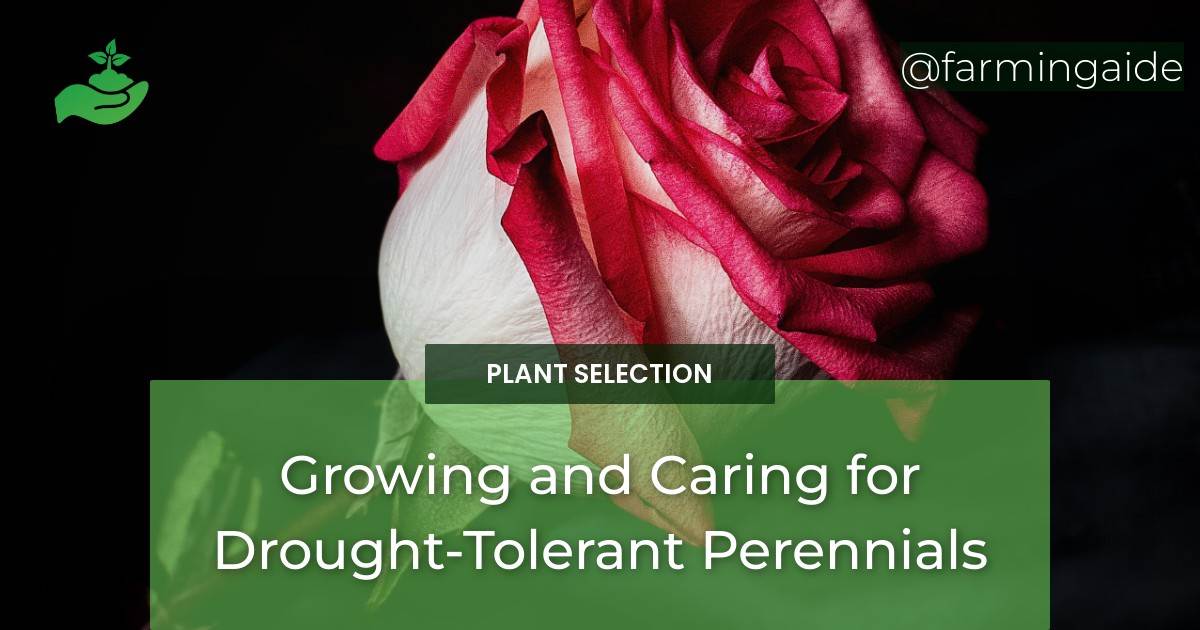Drought-tolerant perennials are an excellent choice for gardeners who live in areas with low water availability or those who want to reduce their water bills without sacrificing the beauty of their gardens. These plants have adapted to survive in hot and arid conditions, making them ideal for locations with prolonged dry spells. Growing and caring for drought-tolerant perennials is relatively easy, provided you know what to do. In this article, we will provide you with tips on selecting, planting, and maintaining drought-tolerant perennials.
Tips for Selecting Drought-Tolerant Perennials
Characteristics of Drought-Tolerant Perennials
The first step in selecting drought-tolerant perennials is understanding their defining characteristics. These plants have evolved to survive and thrive in dry and hot climates, which means they:
- Have deep roots that enable them to access moisture deep in the soil
- Store water in their leaves, stems, or roots
- Have hairy or waxy leaves that reduce water loss through transpiration
- Grow slowly and remain dormant during dry spells
Understanding these characteristics will help you choose the right plants for your garden.
Popular Varieties of Drought-Tolerant Perennials
There are numerous varieties of drought-tolerant perennials to choose from, ranging from colorful flowers to robust shrubs. Some popular options include:
- Agave
- Black-eyed Susan
- Butterfly weed
- Coreopsis
- Daylilies
- Lavender
- Penstemon
- Salvia
- Yarrow
These plants are not only beautiful but also easy to grow and maintain.
Factors to Consider When Choosing Drought-Tolerant Perennials
While drought-tolerant perennials are hardy plants, several factors can affect their growth and survival. Factors to consider when selecting drought-tolerant perennials include:
- Soil type and quality
- Amount of sunlight the area receives
- Climate and weather patterns in your area
- The plant’s mature size and growth habit
By considering these factors, you can select plants that will thrive in your garden.
Planting Drought-Tolerant Perennials
Best Time to Plant Drought-Tolerant Perennials
Fall and spring are the best times to plant drought-tolerant perennials. During these seasons, the soil is moist, and the temperatures are cooler, which allows the plants to establish themselves before the onset of extreme heat.
Soil Preparation for Drought-Tolerant Perennials
Preparing the soil before planting is essential to the success of your drought-tolerant perennials. Start by testing the soil for pH, texture, and nutrient levels. Once you know the soil type, amend it with organic matter such as compost, manure, or leaf mold to improve its texture and fertility.
Proper Planting Techniques for Drought-Tolerant Perennials
When planting drought-tolerant perennials, dig a hole that is twice the size of the plant’s root ball. Gently loosen the roots and place the plant in the hole, ensuring that the top of the root ball is level with the soil surface. Backfill the hole with soil, pressing it firmly around the plant to remove any air pockets. Water the plant thoroughly to help it settle into its new home.
ALSO READ
Maintaining Drought-Tolerant Perennials
Watering Drought-Tolerant Perennials
Drought-tolerant perennials require less water than other plants, but they still need some moisture to thrive. Water your plants deeply once a week, rather than shallowly every day, to encourage deep root growth. Avoid overhead watering, which can lead to leaf diseases and encourage pests. Use a drip irrigation system or a soaker hose instead.
Fertilizing Drought-Tolerant Perennials
Drought-tolerant perennials do not require much fertilization. However, you can add a slow-release fertilizer to the soil during planting to give your plants a boost. You can also apply a liquid fertilizer once or twice a year during the growing season.
Pruning and Deadheading Drought-Tolerant Perennials
Pruning and deadheading are essential maintenance practices for drought-tolerant perennials. Deadheading involves removing spent flowers to encourage the plant to produce more blooms. Pruning, on the other hand, involves removing dead or damaged stems or shaping the plant to maintain its form and size.
Dealing with Pests and Diseases in Drought-Tolerant Perennials
Drought-tolerant perennials are hardy plants that are relatively resistant to pests and diseases. However, some common pests that may attack these plants include spider mites, aphids, and thrips. You can control these pests by using insecticidal soap or neem oil. Diseases that may affect drought-tolerant perennials include powdery mildew and root rot. Ensure that the soil is well-draining and avoid overwatering to prevent these diseases.
Can Drought-Tolerant Perennials also be Considered Low-Maintenance in the Garden?
Yes, drought-tolerant perennials can also be considered low-maintenance in the garden design. These plants require minimal watering and upkeep, making them perfect for busy gardeners looking for a beautiful and sustainable landscape. Incorporating lowmaintenance perennials garden design can save time and resources while still adding beauty to outdoor spaces.
Conclusion
Growing and caring for drought-tolerant perennials is an excellent way to create a beautiful garden while conserving water. By selecting the right plants, planting them correctly, and providing proper maintenance, you can enjoy a thriving and colorful garden even during a drought.


